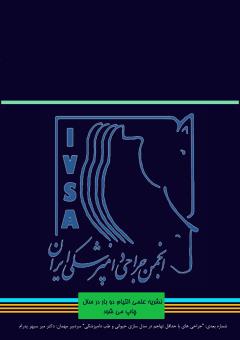Anesthetic management differences between small animal and horse
Subject Areas : علوم جراحی دامپزشکی شامل جراحی های بافت های سخت و نرم
1 - Shiraz university
Keywords: ANesthesia, cat, dog, horse,
Abstract :
Veterinary anesthesia is a relatively new science that uses different drugs and techniques to provide optimal condition (analgesia, immobility, muscle relaxation and amnesia) to perform various medical, diagnostic and surgical procedures in domestic, exotic and wild animals. In order to perform a safe sedation, analgesia, local and general anesthesia, adequate scientific knowledge of anatomy, physiology and pharmacology of the species are required. The most common species that referred for surgical procedures are small animal (cat and dog) and horses. Although surgical procedure are also performed on ruminants, general anesthesia is not common in these species due to some specific reasons (economic costs, bloat, regurgitation and easily performed standing surgeries in cattle). There are several anatomical, physiological and pharmacological differences as well as difference in body weight and temperament between small animal and horses that should be considered before anesthesia. The present paper discusses the major differences that require appropriate preoperative preparation when conducting anesthesia in small animal and horses.
References
1- وصال، ناصر (1400): اصول بيهوشي دامپزشكي. چاپ پنجم، انتشارات دانشگاه شيراز.
2- وصال، ناصر (1398): بيهوشي کاربردی در دامپزشكي. چاپ دوم، انتشارات دانشگاه شيراز.
3- Clarke K.W., Trim C.M. and Hall L.W. (2014): Veterinary Anaesthesia. 11th ed., Elsevier Ltd., Edinburgh, UK.
4- Compston P.C. and Payne R.J. (2013): Standing fracture repair – a new chapter. Equine Vet. Educ. 25, 386-388.
5- Corley K. and Stephen J. (2008): The Equine Hospital Manual. Blackwell Publishing Ltd., Oxford, UK.
6- Dixon P.M., Dacre I., Dacre K., et al. (2005): Standing oral extraction of cheek tooth in 100 horses (1998-2003). Equine Vet. J.; 2: 105-12.
7- Doherty T.J. and Valverde A. (2006): Manual of Equine Anesthesia and Analgesia. Blackwell Publishing, Ames, Iowa, USA.
8- Grimm KA, Lamont LA, Tranquilli WJ, et al., (2015): Veterinary Anesthesia and Analgesia: The Fifth Edition of Lumb and Jones. John Wiley & Sons, Inc, USA.
9- Howes, D. A., Kerr, T. A., McQuillan, R., et al., (2018): Successful small intestinal resection and anastomosis in a late term broodmare with colic via a standing left flank laparotomy. Equine Veterinary Education, 30(10), 531-535.
10- Michou J., Leece E. (2012): Sedation and analgesia in the standing horse 1. Drugs used for sedation and systemic analgesia. In Pract.; 34: 524-531.
11- Muir W.W III and Hubbell J.A.E. (2009): Equine Anesthesia: Monitoring and Emergency Therapy. 2nd ed., Saunders-Elsevier, St. Louis, Missouri, USA.
12- Muir W.W III, Hubbell J.A.E., Bednarski R.M., et al. (2013): Handbook of Veterinary Anesthesia. 5th ed., Elsevier/ Mosby, St. Louis, Missouri, USA.
13- Pollock, P.J., Russel, T., Hughes, T.K., et al. (2008): Transpalpebral eye enucleation in 40 standing horses. Vet. Surg.; 37: 306-309.
14- Schumacher, J., Dutton, D.M., Murphy, D.J., et al., (2000): Paranasal sinus surgery through a frontonasal flap in sedated, standing horses. Vet. Surg. 29, 173-177.
15- Taylor P.M. and Clarke K.W. (2007): Handbook of Equine Anaesthesia. 2nd ed., Saunders Elsevier, Edinburgh, UK.


